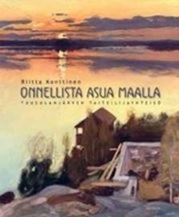Dear Colleagues, representatives of the Regional Council and of the Indigenous Peoples, Ladies and Gentlemen,
The Finnish Chairmanship of the Barents Euro-Arctic Council aims to promote dynamic, inclusive and sustainable development of the Barents region.
Finland bases its Chairmanship on the work of the previous chairs. The successful Norwegian chairmanship has laid a good basis for further work in many sectors. The Kirkenes Summit Declarationfrom June this year gives a valuable guidance for our work. The basic principles of our work will be Coherence, Cooperation and Continuity.
Finland will pay special attention to economic and business cooperation. We will focus on sustainable mining and promotion of the use of clean technology. In the coming years, investments are being made in different sectors: energy, mining, transport and logistics, shipbuilding and offshore infrastructure. At the same time environmental issues are becoming more and more important. This means that more attention needs to be paid to waste management, energy efficiency, energy saving, water management, waste water purification and low emissions.
Transport and logistics is another priority sector of the Finnish Chairmanship. Development of mining, and other industries, as well as trade and tourism requires well functioning cross-border transport connections. Finland will follow up the groundbreaking work of the Norwegian Chair on the Joint Barents Transport Plan. Our objective is a joint vision of how the transport system in this region should be developed. In this work, and especially in the implementation phase, we underline the importance of close cooperation between the Barents transport cooperation and the Northern Dimension Transport and Logistics Partnership. The Northern Dimension is a tool for the European Union to build transport cooperation with neighbouring countries. The Barents cooperation represents the regional voice and it is important that this voice is heard also in Brussels.
Environment and climate change are key priorities during our BEAC chairmanship. For example:
– We want to encourage the sharing of best environmental practices in various sectors, including mining sector.
– The results of the ten years work on hot spots are positive. However, efforts are still needed in many of the hot spots.
– The forest ecosystems in the region are under increased pressure from land-use, exploitation and climate change. This is why the Barents Protected Areas Network project continues to be of high importance.
– Climate change is the major concern for the Arctic regions and therefore implementation of Action Plan on Climate Change for the Barents Cooperation will be in our focus.
The well-being of the people in Barents region is the overriding objective of our work. Promoting young people´s social inclusion is a key priority of the Finnish Chairmanship of the Barents Euro-Arctic Council. Finland pays special attention to young people´s opportunities to participate in the society and their access to education and employment. In this context, the also role of the NGOs is crucial.
Finland will continue promoting the mobility of young people in the Barents region as requested also by the Barents youth conference in 2012. Finland will focus on the efficient functioning of the Barents Youth Cooperation Office in Murmansk.
I have mentioned here some of the high priority sectors. The Finnish Chairmanship gives its full support also to other working groups in their important work, such as tourism, cultural cooperation, education, health and social well-being and emergency and rescue cooperation. Finland has started preparations for the Barents Rescue exercise that will be organized in Northern Finland in 2015.
Finland emphasizes the important role of the indigenous peoples in the Barents cooperation. We have made recently a financial contribution to ensure the functioning of the Indigenous Peoples Working Group. We are prepared in cooperation with other member states to seek a more permanent solution to the financing of the Working Group.
We are committed to close cooperation and communication between the regional actors and the people living in the Barents region. This is of key importance in the Barents cooperation, where the regional level cooperation has such a vital role.
The Finnish Chairmanship underlines the importance to strengthen coherence between BEAC and the other regional councils – the Arctic Council, the Council of the Baltic Sea States and the Nordic Council of Ministers – as well as with the Northern Dimension. Much of this work needs to be done at the working group level. This is an issue that will be on the agenda of the Deputy Ministers’ Meeting in April in Helsinki.
Finland is prepared to make a comprehensive overview of the financial sources of Barents cooperation. We will set up an ad hoc working group to investigate the possibility to establish a Barents Financing Mechanism as stated in the Communique of this Meeting.
Ladies and Gentlemen,
Finland is looking forward to a good cooperation with all the members of the Barents Euro-Arctic Council, the incoming Chair of the Barents Regional Council Arkhangelsk, other Barents regions and all stakeholders. I wish you all welcome to the next Foreign Ministers’ Meeting in 2015 in Finland!
The Finnish Chairmanship Brochure is available in this room.
 Mannerheim
Mannerheim 
